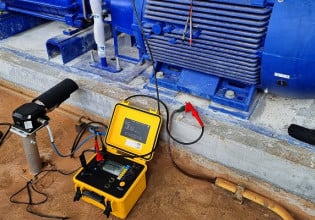ABB’s Optical Sensor will Monitor Methane Levels from Space
ABB, in conjunction with SpaceX, sent a new tool into space for monitoring greenhouse gases.
ABB installed an optical sensor on GHGSat’s Hugo satellite, the latest satellite to monitor greenhouse gases, such as methane. Hugo is the latest of the GHGSat constellation and was launched on January 24, 2021, as part of SpaceX’s ride-sharing program and is beginning to deliver data.
GHGSat Constellation
Hugo joins two other GHGSat satellites, Claire and Iris, forming the GHGSat constellation. The constellation has collected over 60,000 infrared images to track greenhouse gas location and quantity. This data is also combined with aerial measurements taken from GHGSat aircraft and overlaid onto maps to yield an accurate image of greenhouse gas emissions for a particular area.

GHGSat Hugo launched in January 2021. Image used courtesy of GHGSat
GHGSat and ABB teamed up to start constructing another nine satellites for launch between now and 2022.
Methane Monitoring from Space
Hugo’s first set of data was collected over a gas and oil field in Asia. To verify the data, GHGSat compared this dataset to a set collected by Iris, another satellite in GHGSat’s constellation, and found a match.

A methane plume, collected by the ABB sensor and processed by GHGSat. Image used courtesy of GHGSat
One of the challenges with satellite imaging is balancing the view of a large area versus the image’s resolution. For global monitoring, a satellite must be high enough to see a large area. To view such a large area, the resolution suffers.
The ABB Optical Sensor
The ABB optical sensor installed on the Hugo offers a significant improvement in resolution over the existing optical sensor for methane. This sensor has 100 times better resolution than the current sensors used for monitoring methane. The ABB sensor can detect methane levels down to a 25 m x 25 m area.
The ABB sensor relies on certain gases absorbing different energy wavelengths. Visible light passes through nitrogen, oxygen, and other atmospheric and pollutant gases with little difficulty. Infrared, however, is absorbed by greenhouse gases (methane, water vapor, etc.). This is why the greenhouse gases are so problematic—they do not allow infrared to radiate from the planet, but traps it, causing the earth to warm.
Video used courtesy of ABB
However, the ABB sensors use this disadvantage to their advantage: They can detect the infrared absorption, which indicates the location and amount of greenhouse gases released in a particular area.
The Effect of Monitoring Emissions on Global Manufacturing
The result of this monitoring is to freely view the planet’s health without crossing political boundaries and jurisdictions. Methane can be detected, and countries can see if they are meeting their greenhouse gas emission standards based on the data provided by this satellite, equipped with the ABB sensors.
Armed with the spatial and temporal infrared data, governments and companies can identify places of large greenhouse gas emissions and develop solutions to mitigate their ill effects on the planet. This data could be used for environmental compliance or help companies identify trouble spots in their facilities, as some of these emissions represent lost revenue.
The significant improvement in spatial resolution is made possible through the ABB optical sensor. The data collected from these sensors, mounted upon the GHGSat constellation, can ultimately help companies and governments make informed greenhouse gas decisions.






